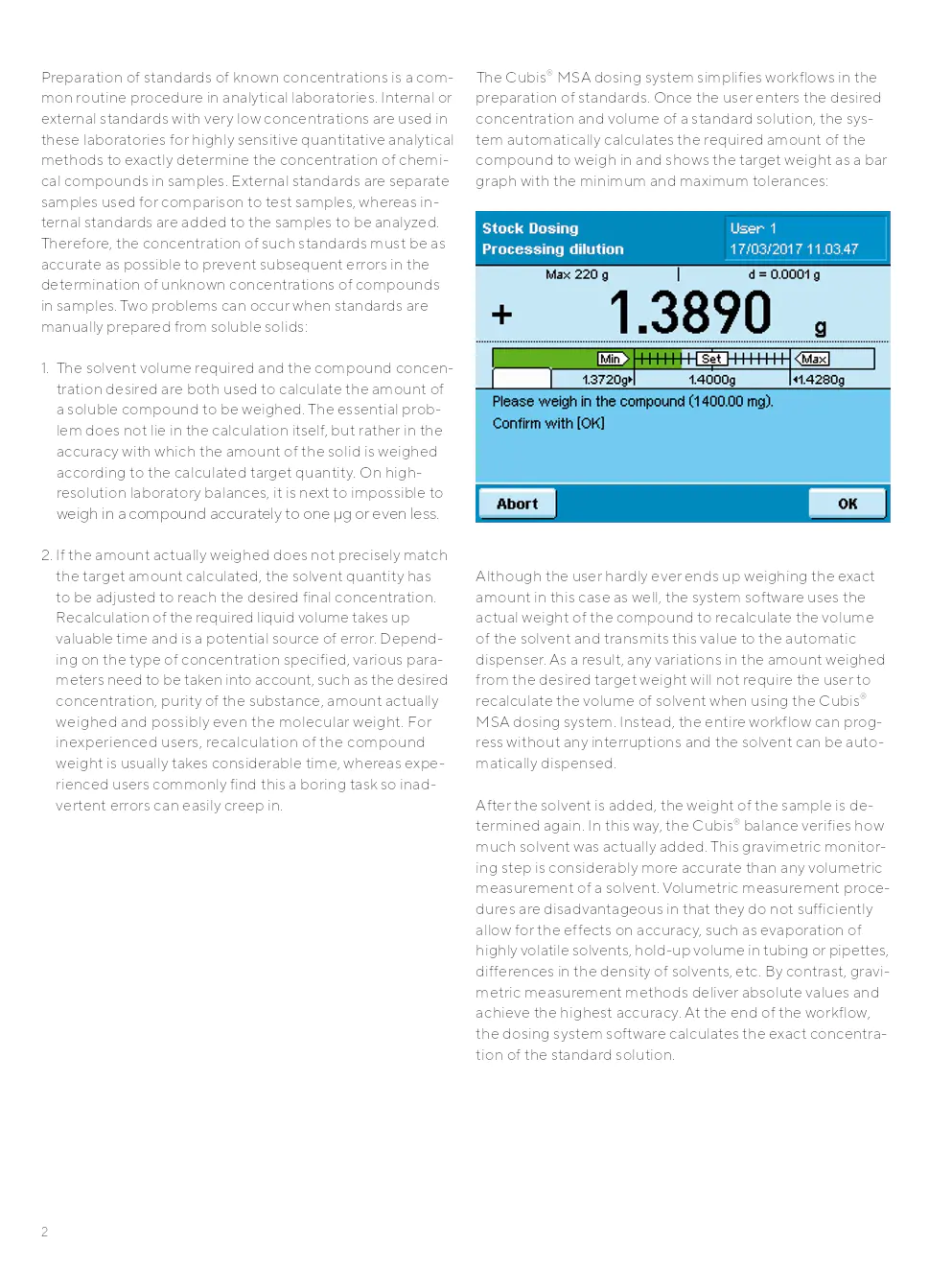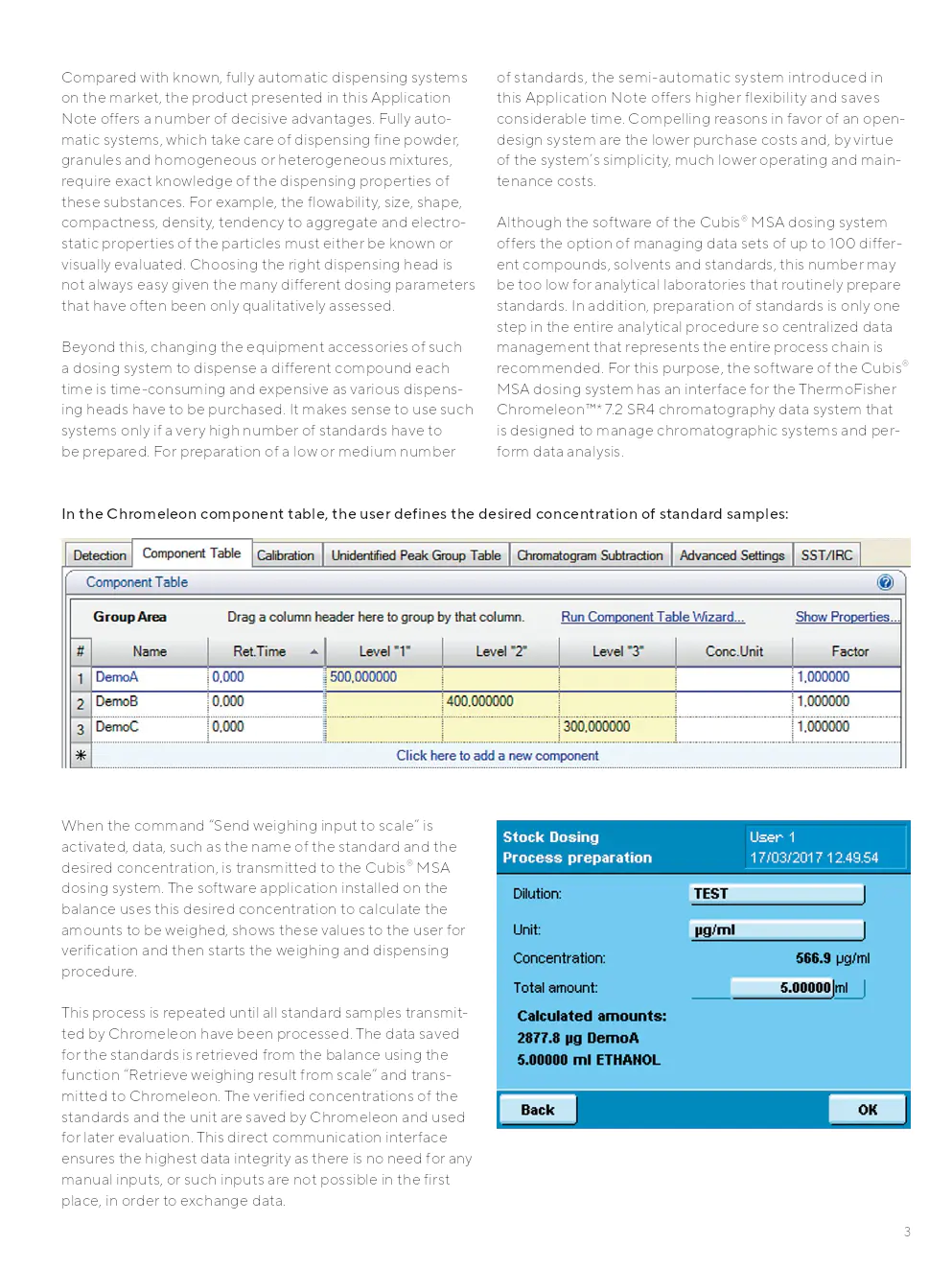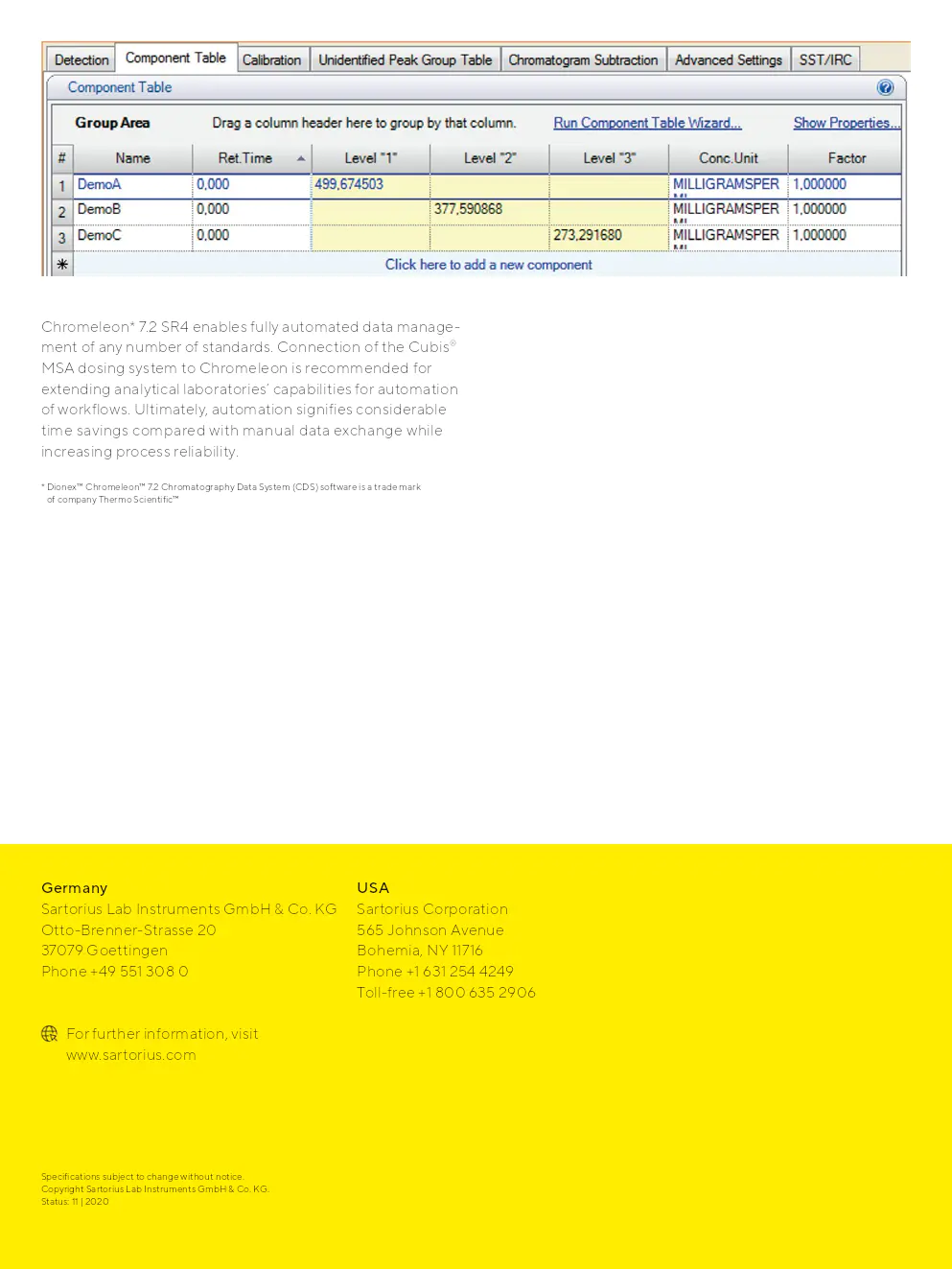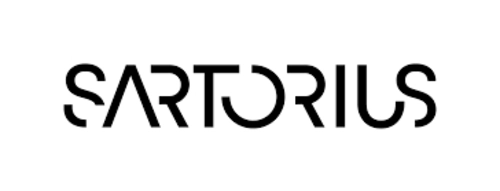note d'application sur la préparation de standards avec le système de dosage sartorius cubis msa
note d'application sur la préparation de standards avec le système de dosage sartorius cubis msa
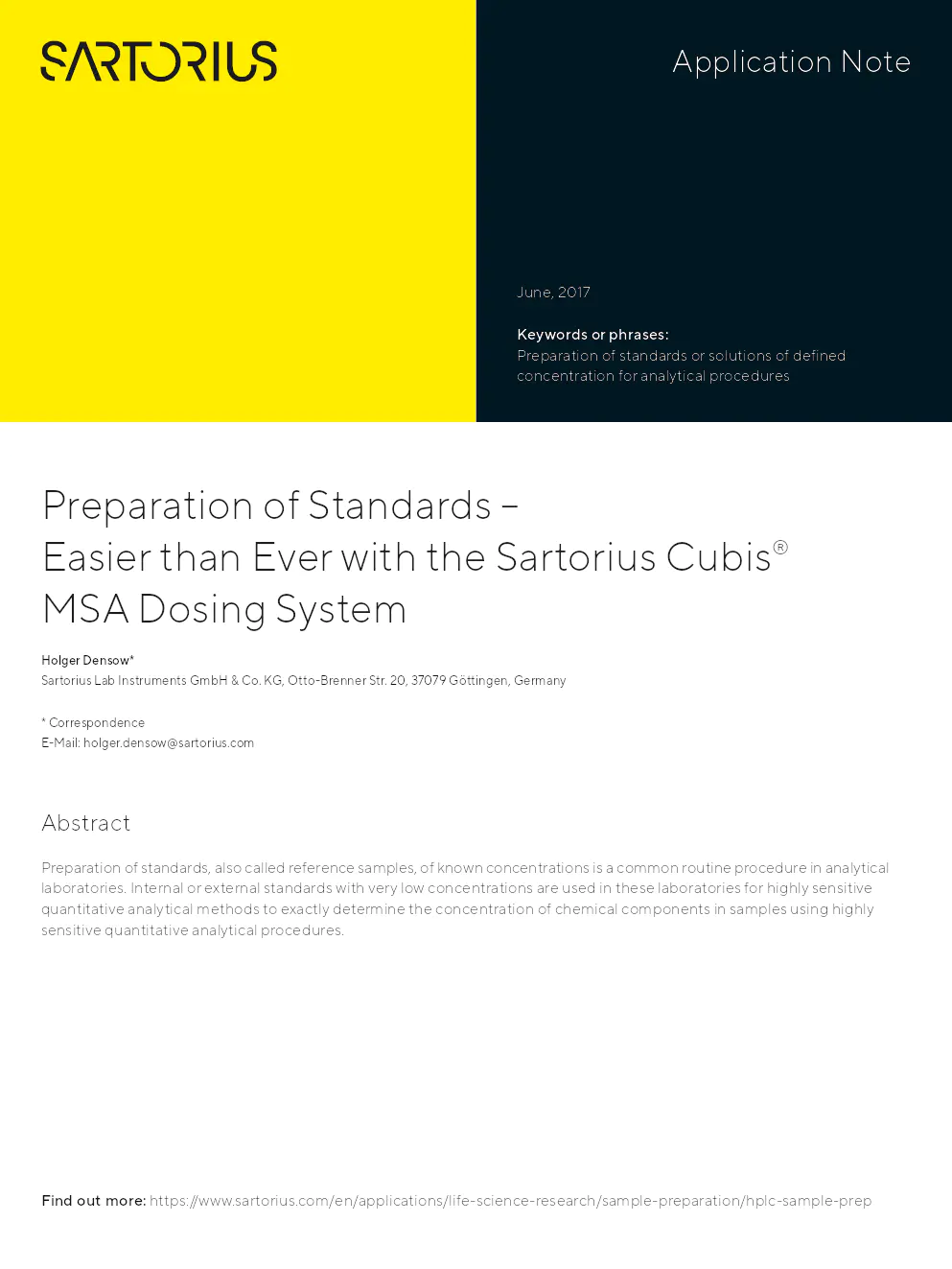
Contenu du document
Date: June, 2017
Auteur: Holger Densow
Sartorius Lab Instruments GmbH & Co. KG, Otto-Brenner Str. 20, 37079 Göttingen, Germany
Email: holger.densow@sartorius.com
Abstract
Preparation of standards, also called reference samples, of known concentrations is a common routine procedure in analytical laboratories. Internal or external standards with very low concentrations are used in these laboratories for highly sensitive quantitative analytical methods to exactly determine the concentration of chemical components in samples using highly sensitive quantitative analytical procedures.
Introduction
The preparation of standards of known concentrations is a common routine procedure in analytical laboratories. Internal or external standards with very low concentrations are used in laboratories for highly sensitive quantitative analytical methods to determine the concentration of chemical compounds in samples accurately. External standards are separate samples used for comparison to test samples, whereas internal standards are added to the samples to be analyzed. Accurate concentration is crucial to prevent errors in determining unknown concentrations of compounds in samples.
Challenges in Manual Preparation
- The solvent volume required and the compound concentration desired are used to calculate the amount of a soluble compound to be weighed. Accuracy in weighing is challenging on high-resolution laboratory balances.
- If the amount weighed does not precisely match the target, the solvent quantity has to be adjusted, taking valuable time and potentially introducing errors.
- Recalculation involves considering various parameters such as desired concentration, purity, amount weighed, and molecular weight.
Sartorius Cubis® MSA Dosing System
The Cubis® MSA dosing system simplifies workflows by automatically calculating the required compound amount once the user inputs the desired concentration and volume. This system recalculates the solvent volume based on actual weight, preventing workflow interruptions.
Advantages of Gravimetric Monitoring
Gravimetric monitoring is more accurate than volumetric measurement, which is affected by factors such as evaporation and density differences. The dosing system software calculates the exact concentration of the standard solution at the workflow's end.
Benefits Over Automatic Systems
The semi-automatic system provides higher flexibility, saves time, and reduces costs compared to fully automatic dispensing systems. It is suitable for laboratories with a low to medium number of standards.
Data Management with Chromeleon
The software of the Cubis® MSA dosing system interfaces with ThermoFisher Chromeleon™ 7.2 SR4, allowing centralized data management. This ensures data integrity and facilitates the extension of analytical laboratories’ capabilities for workflow automation.
Contact Information
Germany: Sartorius Lab Instruments GmbH & Co. KG, Otto-Brenner-Strasse 20, 37079 Goettingen
Phone: +49 551 308 0
USA: Sartorius Corporation, 565 Johnson Avenue, Bohemia, NY 11716
Phone: +1 631 254 4249
Toll-free: +1 800 635 2906
For further information, visit www.sartorius.com
Specifications subject to change without notice.
Copyright Sartorius Lab Instruments GmbH & Co. KG. Status: 11 | 2020
Entreprises concernées :
Document protégé
Document uniquement accessible aux visiteurs connectés
Pas encore de compte ?
Inscrivez-vous
Déjà un compte ? Cliquez ici pour vous connecter
Connectez-vous
